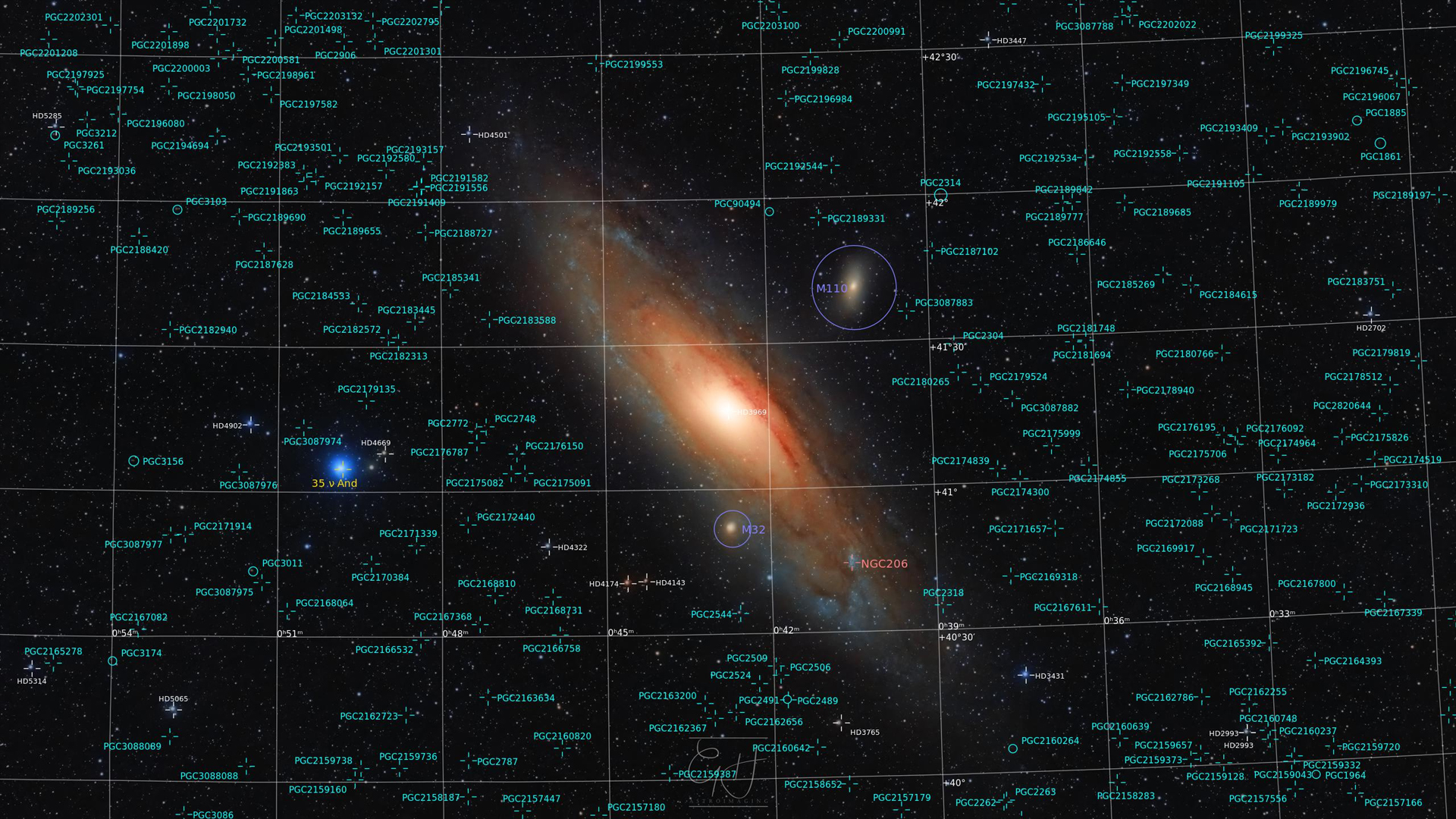The Andromeda Galaxy, November 8, 12, 13, 14, 18 & 19 2019


The Andromeda Galaxy is also known as M31 and NGC224. It is surprisingly large in the sky, covering an area roughly 6 times the width of a full moon. It is our closest galactic companion, and is actually moving towards us with most astronomers expecting the Andromeda and Milky Way galaxies to eventually collide.
More information about this object can be found on its Wikipedia page.
This image represents a number of firsts in my astrophotography journey. It was my first image using a new piece of software for stacking, called Astropixelprocessor. It was also my first image that involved collecting data over multiple sessions, and it was the first time I made a mosaic image. It was necessary to make a mosaic of this because the galaxy is simply too large to fit on the camera sensor even with my relatively short focal length refractor.
I took approximately the same number of frames over each of the 4 quadrants of a 2x2 mosaic, and supplemented this with several more frames positioned in the centre of the 4 panels. The reason for this was to ensure that the stacking software would be able to find reference stars to enable the alignment to work well across every frame.
Despite collecting almost 18 hours worth of exposures on this target, it was still the case that processing the image took much longer than collecting the data. It amazes me that there are some astrophotographers that can produce a stunning image in a matter of an hour or two of processing. I'm definitely increasing my skills in this area, but it still takes me several attempts at processing, normally involving starting again completely from scratch, to reach a result that I'm happy to share.
You can view this image in the WorldWideTelescope by clicking here.










Sign in to enable commenting